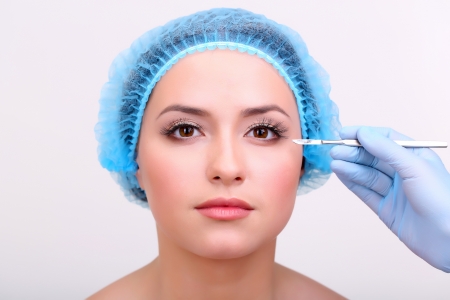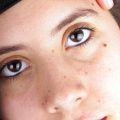Introduction to Skin Types and Laser Red Vein Treatment
When considering any aesthetic treatment, understanding your skin type is crucial—particularly if you’re thinking about laser red vein therapy. The UK’s diverse population means there’s a wide range of skin types, each responding differently to various cosmetic procedures. Typically, skin types are classified according to the Fitzpatrick scale, which ranges from very fair (Type I) to very dark (Type VI). This classification helps practitioners determine how your skin might react to certain treatments and guides them in recommending the most suitable options for you.
Laser red vein treatment, also known as laser thread vein removal or laser vascular treatment, is a non-invasive procedure designed to target and reduce the appearance of visible blood vessels—often found on the face and legs. This treatment uses focused light energy to collapse unwanted veins without damaging surrounding tissue, allowing the body to naturally eliminate them over time. It’s especially popular among those seeking solutions for facial redness, spider veins, or broken capillaries that can’t be easily concealed with makeup.
In the UK, where cooler climates can sometimes exacerbate conditions like rosacea or thread veins due to temperature fluctuations and lifestyle factors, laser red vein treatment has become an increasingly sought-after solution. However, not all skin types respond equally well to this form of therapy. That’s why it’s essential to understand both your own skin characteristics and how they interact with advanced technologies like lasers before deciding if you’re an ideal candidate for this procedure.
2. Identifying Your Skin Type: The Fitzpatrick Scale Explained
Before considering laser red vein treatment, it is crucial to understand your skin type, as this can significantly influence both the safety and effectiveness of the procedure. One of the most widely recognised systems for classifying skin types in clinical settings across the UK is the Fitzpatrick Skin Type Scale. Developed by Dr Thomas Fitzpatrick in 1975, this scale categorises skin based on its response to ultraviolet (UV) light exposure, particularly regarding how easily it burns or tans. The Fitzpatrick Scale is not only valuable for dermatologists but also helps individuals make informed choices about cosmetic treatments like laser therapy.
| Fitzpatrick Type | Skin Characteristics | Reaction to Sun Exposure |
|---|---|---|
| Type I | Pale white skin, blue/green eyes, blonde/red hair | Always burns, never tans |
| Type II | Fair skin, light eyes and hair | Usually burns, tans minimally |
| Type III | Darker white skin, brown hair and eyes | Sometimes mild burn, gradually tans to light brown |
| Type IV | Olive or light brown skin, dark hair and eyes | Rarely burns, tans with ease to moderate brown |
| Type V | Brown skin, dark eyes and hair | Very rarely burns, tans very easily |
| Type VI | Deeply pigmented dark brown/black skin | Never burns, deeply pigmented |
The Fitzpatrick Scale’s relevance to laser treatments lies in its ability to predict how your skin will react to certain wavelengths of light. For example, individuals with Types I–III often respond well to standard laser settings for red vein removal, while those with darker complexions (Types IV–VI) may require specialist equipment or adjusted protocols to minimise risks such as pigmentation changes or burns.
How can Brits determine their own Fitzpatrick Skin Type?
- Observe your initial reaction to sun exposure: Do you burn quickly even with brief exposure? Or do you tan without burning?
- Consider your natural hair and eye colour: Lighter features typically align with lower Fitzpatrick types.
- Your tanning habits: If you tan rapidly and rarely burn, you likely fall into a higher category.
- If unsure: Consult a qualified skincare professional or dermatologist who can accurately assess your skin type before any laser procedure.
This understanding is especially important across the UK where diverse genetic backgrounds mean a wide variety of Fitzpatrick types are present. Knowing your classification not only enhances safety but also ensures you receive the most appropriate advice and outcome from your laser red vein treatment.
![]()
3. Who is Most Suitable for Laser Red Vein Treatment?
When considering laser therapy for red veins, it is essential to assess both your skin type and the specific concerns you hope to address. In the UK, common skin issues such as facial thread veins, broken capillaries, and rosacea often prompt individuals to seek effective treatments. Generally, those with lighter skin tones—typically Fitzpatrick skin types I to III—are considered the best candidates for laser red vein procedures. This is because lighter skin allows the laser energy to target the unwanted blood vessels more precisely, minimising the risk of pigmentation changes or burns. However, recent advances in laser technology have expanded options for individuals with slightly darker complexions, though a professional assessment remains crucial.
Laser red vein treatment is particularly beneficial for people experiencing visible facial veins on areas like the cheeks, nose, or chin, which are commonly seen across all age groups in Britain due to environmental factors and hereditary predisposition. Those with sun-damaged skin or who flush easily may also notice significant improvements after treatment. It is important to note that while many find success with laser therapy, it may not be suitable for everyone; individuals with very dark skin (Fitzpatrick types V and VI), those prone to keloid scarring, or anyone taking photosensitising medications should approach this option with caution. Ultimately, a consultation with an experienced practitioner will determine if your unique skin profile and concerns align well with what laser therapy can safely achieve.
4. Potential Risks and Considerations for Different Skin Types
When considering laser red vein treatment, it’s essential to understand that the potential risks and side effects can vary depending on your skin type. In the UK, our diverse population means practitioners regularly see a broad range of complexions, from very fair (Fitzpatrick I-II) to darker skin tones (Fitzpatrick V-VI). Understanding these differences is key to ensuring safety and optimal results.
Common Side Effects Across All Skin Types
Most patients may experience mild redness, swelling, or a sensation similar to sunburn immediately after treatment. These effects usually subside within a few hours to a couple of days. However, more significant complications are possible if the laser settings are not tailored to the individual’s skin characteristics.
Specific Considerations by Skin Type
| Skin Type | Potential Risks | Recommended Precautions |
|---|---|---|
| Fair Skin (Fitzpatrick I-II) | Higher sensitivity; risk of temporary redness or blistering. | Lower energy settings; diligent post-treatment sun protection. |
| Medium Skin (Fitzpatrick III-IV) | Moderate risk of pigmentation changes (hyper/hypopigmentation). | Patch testing advised; avoid tanning before/after treatment. |
| Darker Skin (Fitzpatrick V-VI) | Increased risk of burns, long-term pigmentation changes, and scarring. | Specialist devices and settings required; always consult an experienced practitioner. |
British Health Guidelines and Practitioner Standards
The NHS recommends that all cosmetic laser treatments be performed by qualified healthcare professionals who understand the nuances of British skin diversity. Clinics should conduct a thorough consultation and patch test prior to treatment, especially for individuals with a history of keloid scarring or pigmentary disorders. It is also advisable for patients to disclose any medications or underlying health conditions which could influence healing or increase sensitivity.
Cultural Considerations in the UK Context
With Britain’s multicultural society, practitioners must be culturally competent and aware of specific needs—such as religious dress that may limit sun exposure post-treatment, or genetic predispositions to certain skin responses. Transparent communication about expectations and aftercare is vital for all patients to ensure safe outcomes.
5. Pre- and Post-Treatment Care: Expert Tips
Proper preparation and aftercare are crucial to achieving the best results from your laser red vein treatment, especially considering the diversity of skin types across the UK. Following expert guidance, including NHS recommendations and established British skincare practices, can help minimise risks and promote optimal healing.
Before Your Laser Procedure
Preparation begins well before your appointment. It is advisable to avoid sun exposure and tanning beds for at least four weeks prior to treatment, as increased melanin can raise the risk of pigmentation changes. Cease using retinoids, exfoliating acids, or harsh skincare products a week before your session to reduce skin sensitivity. If you are taking any medications or have underlying health conditions, discuss these with your practitioner during your consultation to ensure safety. Arrive at your appointment with clean skin, free from makeup, moisturisers, or perfumes.
Aftercare for Optimal Recovery
Your practitioner will provide personalised aftercare instructions tailored to your skin type. Common recommendations include keeping the treated area cool and clean, using a gentle cleanser and avoiding hot showers or vigorous exercise for 24–48 hours post-procedure. Apply a broad-spectrum SPF 30 or higher daily, even on cloudy days—a key element in UK skincare due to our unpredictable weather. Avoid direct sun exposure and refrain from picking or scratching treated areas to prevent scarring or infection.
Managing Side Effects
Mild redness, swelling, or sensitivity is normal and typically resolves within a few days. To soothe discomfort, use cold compresses or recommended emollients. If you notice signs of infection or prolonged irritation, contact your clinic promptly for advice based on NHS protocols.
Long-Term Maintenance
Adopt a consistent skincare routine post-treatment with gentle products suited to your skin type. Regular follow-up appointments may be recommended to monitor progress and determine if additional sessions are needed for optimal results. By adhering to these expert tips and prioritising both pre- and post-treatment care, you maximise your chances of a successful outcome while safeguarding the long-term health of your skin.
6. Consultation and Next Steps
When considering laser red vein treatment in the UK, booking a consultation with a certified practitioner is an essential first step. This ensures you receive professional guidance tailored to your unique skin type and vascular concerns. Always seek out clinics registered with the Care Quality Commission (CQC) or practitioners listed on reputable registers, such as the Joint Council for Cosmetic Practitioners (JCCP). These accreditations signal adherence to strict safety standards and up-to-date clinical practice.
What to Expect During Your Assessment
Your initial consultation will typically involve a thorough review of your medical history, current skincare routine, and previous treatments. The practitioner will assess your skin type using established Fitzpatrick scale criteria, examine the extent and location of your red veins, and discuss your treatment expectations. This personalised approach helps determine whether you are a suitable candidate for laser therapy and which technology is most appropriate for your needs.
Patch Testing and Safety Considerations
A patch test may be performed on a discreet area to evaluate how your skin reacts to the laser. This is particularly important for those with darker skin tones or individuals prone to hyperpigmentation. The practitioner will explain potential risks, side effects, and the expected number of sessions required for optimal results.
Preparing for Treatment
You may be advised to avoid sun exposure, certain medications, or active skincare ingredients before starting your course of treatment. The consultation is also an opportunity to ask questions about recovery times, aftercare recommendations, and costs involved.
If you decide to proceed, your practitioner will develop a tailored treatment plan designed around your lifestyle and aesthetic goals. By choosing a reputable UK-based clinic and undergoing a comprehensive assessment, you can ensure the safest and most effective outcome from your laser red vein treatment journey.


